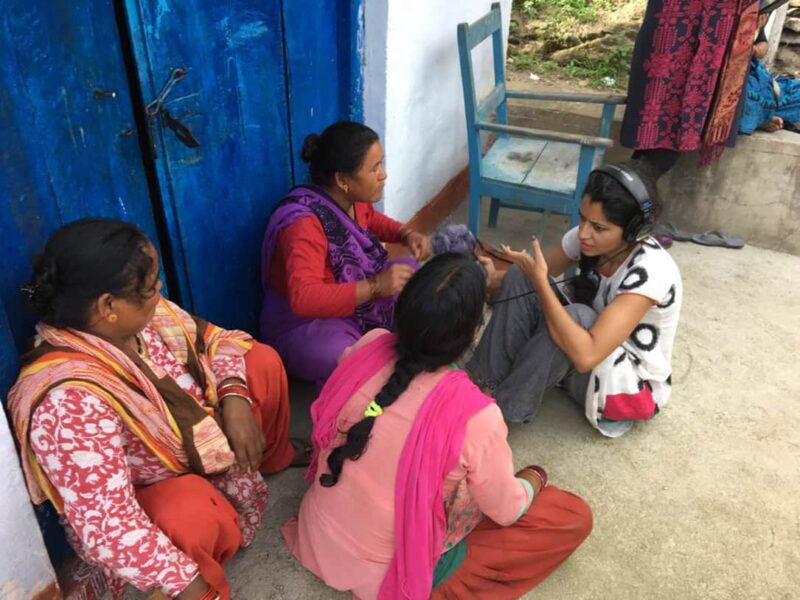Globally, only 24 percent of the people heard, seen or read about in the news are women, according to the Global Media Monitoring Project, a volunteer network that measures women’s global presence, portrayal, and representation in media. That’s despite the fact that women make up roughly half the world’s population.
It’s a gap in sourcing that is widest in news about politics and government, but a study carried out by Internews’ Earth Journalism Network (EJN) last year determined that 62 percent of journalists covering environment and climate stories found it difficult to find female experts to interview.
The absence of women’s voices in the news is harmful because it limits their exposure as powerful role models, prevents them from sharing experiences and reinforces traditional gender roles. It also means that newsrooms miss out on perspectives needed to tell a complete story.
In many cases, the problem is not that there is necessarily a shortage of female experts and spokespersons, but rather that reporters are less aware of them, either due to unconscious bias, cultural barriers or women’s own reluctance to engage with media.
To respond to these challenges, Internews’ United for News coalition has created Reflect Reality, a digital handbook aimed at helping newsrooms and reporters include more authoritative, diverse female sources in their stories. Led by Internews, in collaboration with the World Economic Forum and with support from the News Integrity Initiative and the CUNY Graduate School of Journalism, Reflect Reality incorporates proven strategies and lessons learned from two dozen organizations around the world working to address this disparity.
Learn more about the handbook.
Of particular note is a pilot initiative by EJN, which reached out to around 1,500 environmental reporters from our global community to analyze how women are included as sources in stories.
As part of this initiative, we also put in place a rigorous monitoring and evaluation system to track women’s voices in stories produced for our Asia-Pacific and Bay of Bengal projects. This included tracking the types of female sources – be they experts, activists, government officials or sources of personal narrative – and whether the stories touched on gender-related issues. By analyzing how and when women appeared as sources, we sought to better understand the extent to which we’re helping deliver on our goal of including diverse women’s voices in the reporting we support.
While the tracking activity is still underway, we found that among the dozens of stories analyzed, just over 30 percent of the sources were women, the majority of them female sources sharing a personal narrative related to environmental or climatic change.
Read more about that initiative and its findings.
We’re continuing to track stories produced through these two projects as they enter another year and are beginning to assess the data to determine where there are gaps and how we can fill them. Some of the areas we’re analyzing include:
- Which countries or regions have few female experts as sources;
- Whether the reporter’s gender impacts the gender of their sources;
- What categories of sources we’re not considering;
We’re also planning to reach out individually to reporters who have either a large number of female sources, or don’t include any, to determine how and why they selected them. And we’ll inquire about the challenges reporters might face including women in their stories with an eye toward determining ways we can respond.
At a time when trust in the media globally is declining, including the voices of everyone in our communities matters. As Kathy English, public editor at the Toronto Star, one of the newsrooms that participated in a Reflect Reality pilot project, stated:
“If you want people to pay you, they need to trust you, and they won’t trust you if they can’t see themselves in you.”
(Banner photo: EJN Grantee Amrita Gupta interviews women from the Mahila Umang Producers Company in Ranikhet, Almora Uttarakhand, in August 2018. Credit: Shriram Raviraj)
